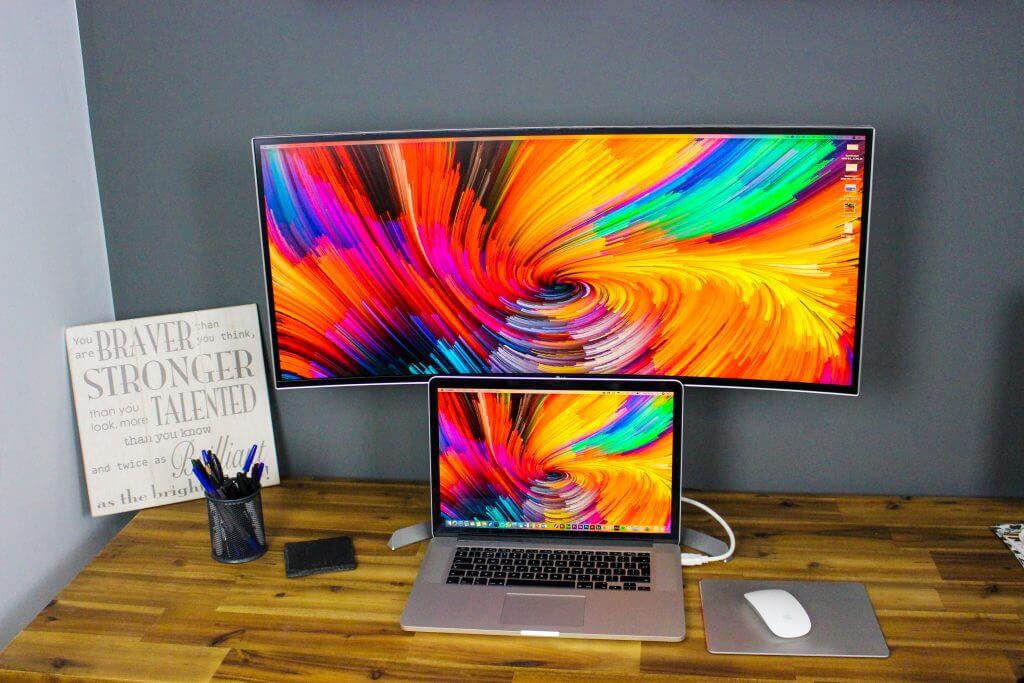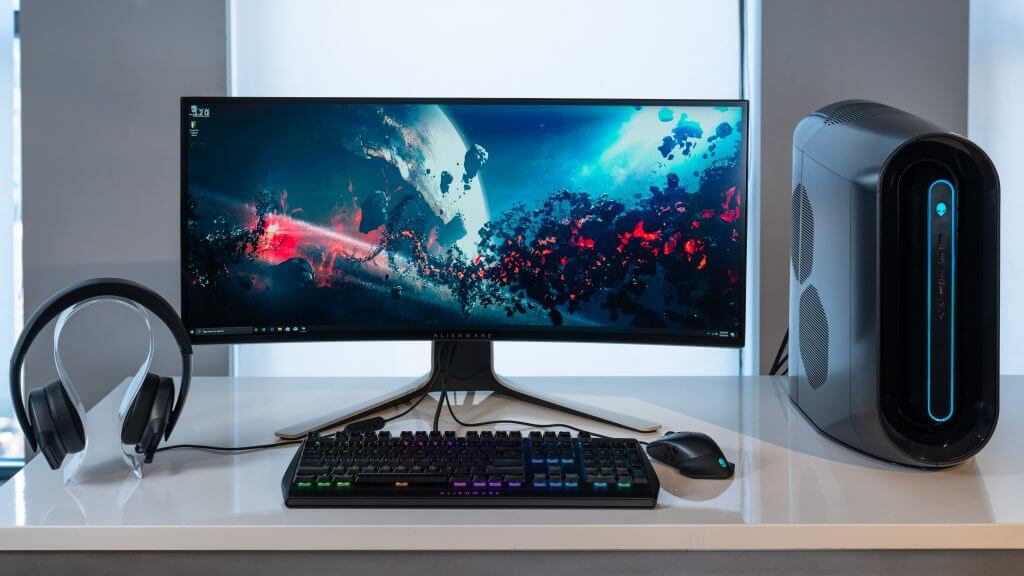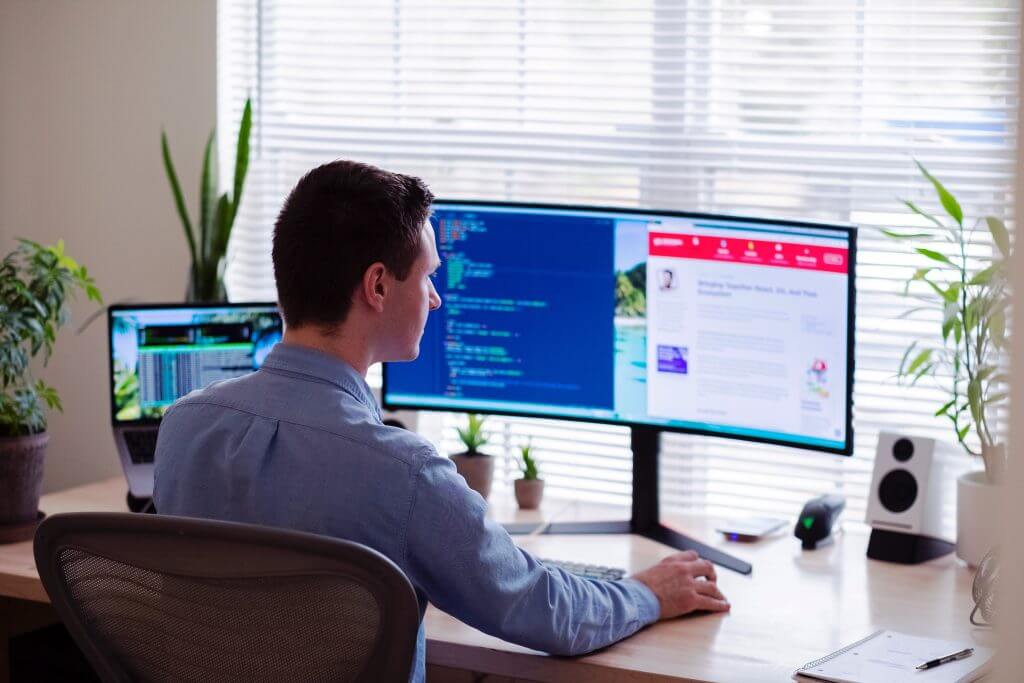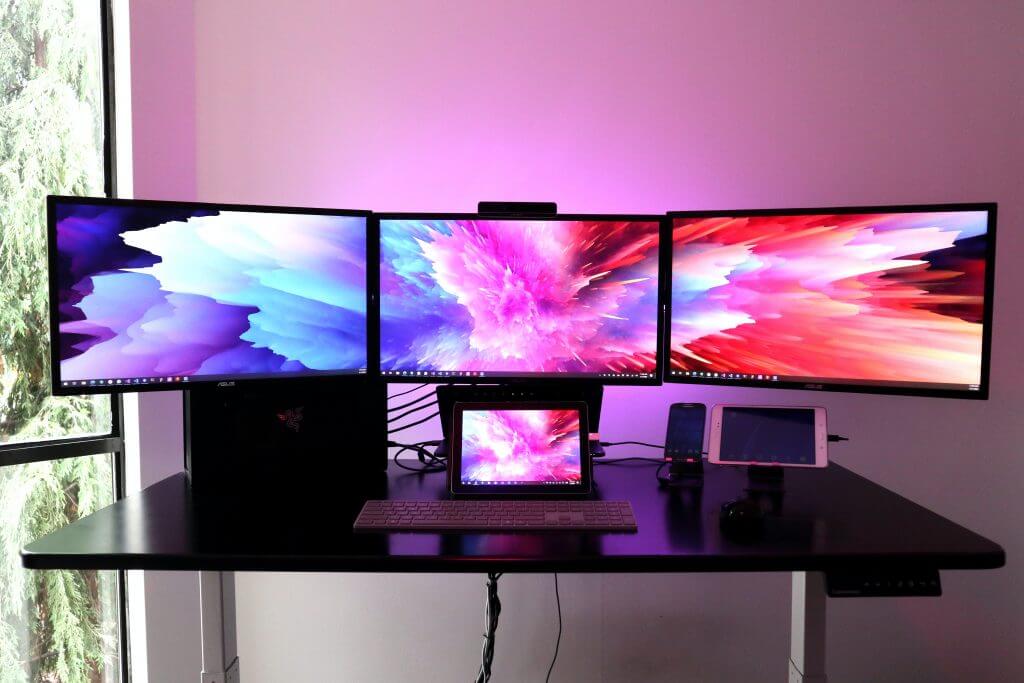
As curved monitors increase in popularity, many people have wondered whether they should get a curved monitor instead of a flat one.
Is a curved monitor worth the extra price you pay when compared to a flat monitor? Are there benefits of using a curved monitor instead of a flat one? Why would I want a curved monitor?
Immersive Gaming and Viewing Experience

One of the most common reasons people get a curved monitor is for gaming. If you are a gamer, you’ll be pleased to learn that you can enhance most gaming experiences with the use of a curved monitor. Curved monitors provide an immersive gaming experience and makes your gaming more realistic. They do a much better job of adding depth and mimicking the three-dimensional space of the real world compared to flat screen monitors.
They do this by showing the visual information across a wider field of view and creating the illusion of peripheral vision, thus making the experience more immersive.
Some users have also said that curved monitors seem to be bigger than they really are because there is more in their field of view on a curved screen when compared to a flat screen. If you’ve ever wanted a huge screen, but you have space limitations, a curved screen might be the way to go.
Reduced Eye Movement and Eyestrain
As screen sizes have increased and become sleeker, we’ve seen flat-screen monitors that are too big for our eyes to see in a natural field of view. It’s like sitting too close to the front of the cinema. Something’s happening on the right-hand side, so you turn your head to the right. Action is going on in the left-hand corner, so you move your eyes to the left. This constant need for movement can lead to physical discomfort and eye fatigue.
With a curved monitor, there is no need to turn to see the whole screen. Users can see the entire screen without swiveling their heads. Less movement of the eyes is needed to take in everything on a curved monitor.
While this might not seem like a massive benefit in the short-term, consider how many hours per week you use a monitor. Comfort should be a priority to ensure you remain in the best of health. And this should be the case whether you are using a monitor for fun or for work.
Increased Productivity

Anyone who has put in several hours during a gaming session will be thankful for anything that reduces eye strain.
In addition to gaming, curved monitors are also a good option if you are someone who stares at your monitor for long hours for any reason.
Because users are able to see more on the screen with less eyestrain, this can also helps with increasing productivity.
Glare and Reflections
Glare on a screen can make viewing more difficult and contribute to eye strain. If positioned properly, curved screens can help you reduce distracting reflections by distorting glare. With fewer reflections, a curved monitor user experiences a more realistic and immersive visual field with less distractions.
One key thing you have to remember is that positioning is important. If the position of the curved monitor is wrong, then the glare could actually be worse than a flat screen monitor. We recommend you make sure light does not shine directly onto the monitor and angle any light sources away from the screen.
Practical Tips to Take Advantage of a Curved Monitor
To make the most of the benefits of a curved monitor, look for a large screen and try to sit in the middle of the display so that you can minimize turning. If you tend to be the only person looking at the screen, this could be perfect for you.
Curved screens are better when they are bigger. People often use curved screens in situations where they will be using a big single monitor, rather than multiple screens. If you are someone who likes to use just one big screen, a curved screen is worth considering.

When it comes to multiple screens, flat screens tend to be more appropriate. Flat screens will be more forgiving when the user changes viewing angles.
Flat screens also tend to be smaller and cheaper, requiring less investment to set up multiple flat-screen monitors than it would cost to set up several monitors with curved screens.
Mounting can also be an issue. It is more difficult to mount a curved monitor on the wall. Flat screens are easier to mount as they typically flush with the adjacent wall, while curved screens require special mounts and positioning. If a mounted monitor is a something you have to have, you might want to look past curved monitors.
Remember to take Breaks
We would also like to remind you not to let the curvature or non-curvature of your screen dictate your eye health. Remember to take breaks, no matter what kind of screen you are using. A good rule of thumb is to take a 20-second break to look at something 20 feet away every 20 minutes. This is called the “20-20-20” Rule and can help reduce eye strain. This healthy habit combined with a great curved screen can help you be more productive and avoid eye strain.
A curved monitor’s mechanics are not all that different from the internal workings of a flat screen monitor. The added curvature of the screen, however, can be of benefit for certain users.
For a more immersive experience, reduced eye strain, and increased productivity, you may want to look for a curved monitor.
Share this:




